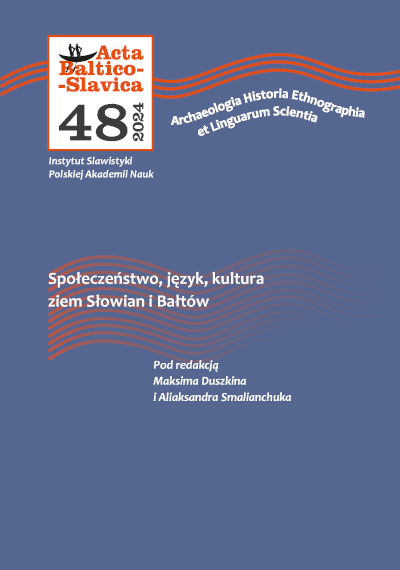Multilingualism of Ukrainian Elites in the Seventeenth
Century: The Case of Lazar Baranovych
Multilingualism of Ukrainian Elites in the Seventeenth
Century: The Case of Lazar Baranovych
Author(s): Halyna NaienkoSubject(s): Historical Linguistics, Sociolinguistics, Eastern Slavic Languages
Published by: Instytut Slawistyki Polskiej Akademii Nauk
Keywords: Slavic languages; history of the Ukrainian language; Church Slavonic; multilingualism; Lazar Baranovych;
Summary/Abstract: The article examines the multilingual practice of Lazar Baranovych in the context ofthe sociolinguistic situation of Ukraine in the early modern period. Multilingualismis inherent in border societies, including Ukrainian society in the seventeenth centu-ry, and the choice of language in each case depends on a combination of factors – re-ligious, pragmatic, communicative, cultural, and artistic/stylistic. The study analyzesthe phenomenon of code-switching on the example of Baranovych’s own marginalnotes, made in Polish, Ruthenian (prosta mova) and Church Slavonic. The Ukrainianrecension of Church Slavonic reflects the influence of spoken Ukrainian, which canbe traced in texts from the cultural centers in the Polish-Lithuanian Commonwealthand later the Russian Empire. This is illustrated by the language of the collection ofsermons Трубы на дни нарочитыя праздникɷвъ [Trumpets for Major Feast Days](1674), which Lazar Baranovych could not publish in Moscow not only for politicalreasons but also because of the peculiarity of the language
Journal: Acta Baltico Slavica
- Issue Year: 2024
- Issue No: 48
- Page Range: 1-22
- Page Count: 22
- Language: English

